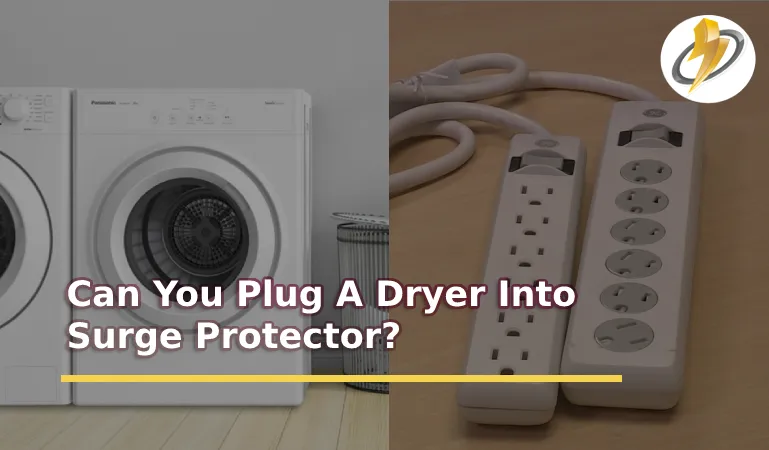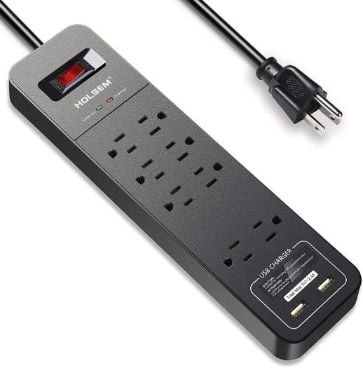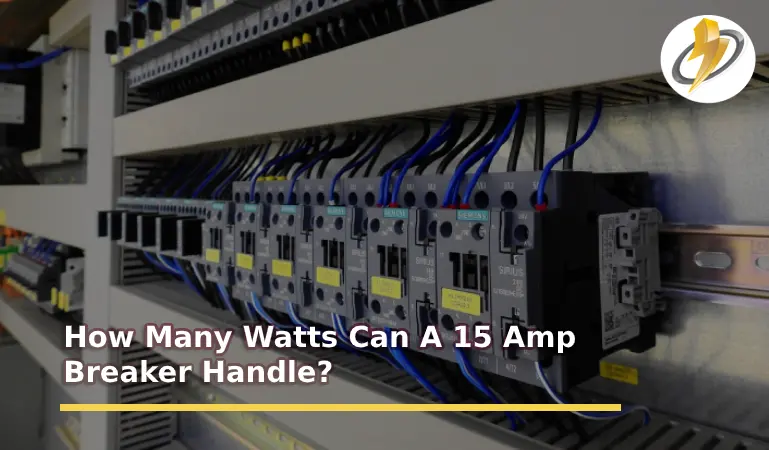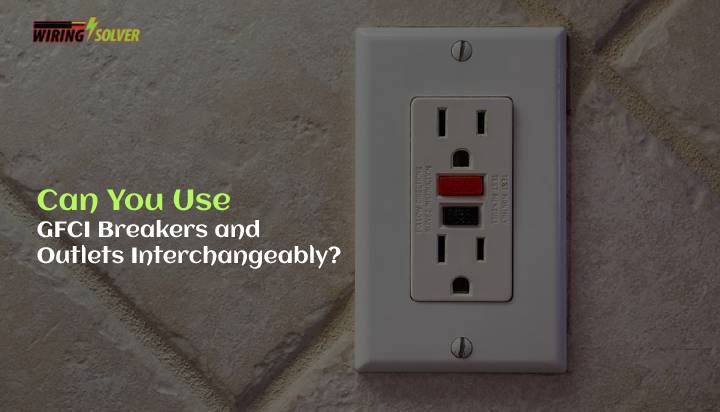Home appliances are an integral part of our daily lives, and it’s essential to ensure their safety and longevity. One common question many homeowners ask is whether it’s safe to plug a dryer into a surge protector.
The answer depends on the rating of both the surge protector and the dryer in question. If the surge protector has the necessary rating to support your dryer, then there should be no problem plugging it into the protector.
This article will take a closer look at the benefits and drawbacks of plugging a dryer into a surge protector and provide some tips for ensuring your appliances’ safety.

Can You Plug a Dryer into a Surge Protector?
It is okay to plug your dryer into a surge protector with proper ratings. By proper ratings I mean it should be able to handle the dryer.
Surge protectors’ main task is to consume excessive electrical energy during power surges and keep your dryer safe from high voltage.
It is like, if you want to save yourself from a bunch of criminals, we have to be strong enough to handle them. Here your strength is comparable to the strength of a surge protector. And the criminals are the power surges.
If you choose a low-rated protector, they are never going to give you the protection you need. The same goes for power strips too. You can also check out the power conditioner vs surge protector as well.
What Is the Energy Consumption of a Dryer?
A dryer has a power rating of around 1800 to 5000 watts. The rating depends on the size and capacity of the dryer. The rated voltage can be either 120 Volts or 240 Volts.
These ratings are very important when choosing the right surge protector and cables. In the case of a surge protector, there are terms like clamping voltage rating, energy consumption rating, etc.
How to Choose a Surge Protector for Your Dryer?

While choosing the right surge protector you need to know the power ratings of your dryer. Depending on them you have to choose the protector by the rating of its clamping voltage, power capacity, and joule rating.
Clamping voltage is an important term for a surge protector. It’s a measurement of the protector at which the surge is attenuated.
For example, if there is a surge of 4000 Volts, but the surge protector attenuates most of it and only a voltage of 400 is visible in the circuit, then 400 Volts is the clamping voltage.
The joule rating shows the energy consumption-ability of a surge protector. A higher joule rating indicates more surge power handling ability. So it is better to have a high joule rating.
For clearer knowledge you can check if can you plug a washing machine into a surge protector.
Which Is the Best Surge Protector for Dryer?
A surge protector with a 1000 to 2000 joule rating is recommended for a dryer. The clamping voltage should be low as possible. A good surge protector has a clamping voltage of a maximum of 400 volts.
Tripp Lite surge protectors are one of the best choices right now. There are several models in the market for this brand.
The Isobar Ultra 2 is rated 1410 Joule with a 15 Amp circuit breaker. It is a well-recommended surge protector for a dryer or a washing machine.
How Can I Ensure the Safety of My Dryer?
Ensuring the safety of your dryer is important to protect both the appliance and your home. Here are a few tips to help you achieve this:
Use the right surge protector:
When choosing a surge protector for your dryer, make sure it’s rated for the specific current and voltage requirements of your appliance. A surge protector that is not rated for the right amount of current and voltage can be dangerous and could even cause damage to your dryer.
Unplug your dryer during storms:
High voltage can occur during storms or other instances of bad weather. To minimize the risk of damage to your dryer, it’s always a good idea to unplug it during these times.
Regular maintenance:
Regular maintenance of your dryer can help ensure its safety and longevity. This includes cleaning the lint filter after each use, checking the venting system for clogs, and having a professional inspect your dryer annually.
Avoid overloading the dryer:
Overloading your dryer can put undue stress on the appliance and increase the risk of a fire. Make sure to follow the manufacturer’s instructions for load capacity and never exceed the recommended weight limit.
Replace frayed or damaged cords:
Frayed or damaged cords can pose a serious safety hazard. If you notice any damage to the cord of your dryer, replace it immediately.
Keep the dryer clean:
Dust and lint can accumulate in your dryer over time, increasing the risk of a fire. Regular cleaning and maintenance of your appliance can help minimize this risk.
Keep the dryer in a well-ventilated area:
Your dryer needs to be in a well-ventilated area to ensure it operates safely. Make sure the appliance is not in a cramped or enclosed space, and that the venting system is clear of obstructions.
Remember, taking the necessary precautions and being informed about the potential risks associated with plugging your dryer into a surge protector is key to keeping your home and appliance safe.
Summary
Plugging a dryer into a surge protector can provide added protection against power surges and voltage spikes. However, it’s important to ensure that the surge protector is rated for the specific current and voltage requirements of your dryer.
Overall, while plugging a dryer into a surge protector is generally considered safe, it’s important to be informed and take the necessary precautions to avoid any potential issues.



![Can A Dual Fuel Generator Run On Natural Gas? [Answered]](https://wiringsolver.com/wp-content/uploads/2022/05/Can-A-Dual-Fuel-Generator-Run-On-Natural-Gas.jpeg)
![How Does An Electric Doorbell Work? [Explained]](https://wiringsolver.com/wp-content/uploads/2022/06/How-Does-An-Electric-Doorbell-Work.jpeg)

